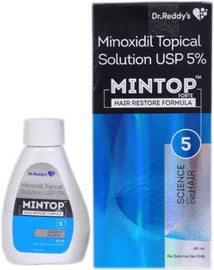Male pattern hair loss is the most common type of hair loss in men. Baldness appears gradually on the crown of their scalp or as receding hairline at the frontal and thinning of hair over temple areas.
It affects about 30% of men by the time they are 30 and almost 50% of men over the age of 50.
Your shopping bag is empty
Go to the shop
Hair loss has strong emotional and psychological consequences. The causes of hair loss can range from hormonal changes, stress and iron deficiency to fungal infections and medication-induced hair thinning.
We at MySkinCare.in, offer compounded solutions, therapies, naturopathic remedies and products to promote hair growth, thickness, and reduce hair fall and breakage.
We offer programs that tackle hair loss and guide you with dietary and lifestyle changes that can help resolve this problem. Most of our patients see visible improvements after the first 4-6 weeks itself.
Androgenetic Alopecia
It is the most common cause of hair loss. It is due to genetic or hormonal causes. It is also called as common baldness, male pattern hair loss & premature baldness.

Frequently Asked Questions
Both genetic and hormonal factors are responsible. Testosterone is naturally converted in the body to dihydrotestosterone (DHT) which causes a change in the hair follicles on the scalp. Increased levels of DHT have been found in the balding scalp. The hair strands become progressively smaller in diameter, shorter in length and lighter in colour and the follicles eventually shrink completely and stop producing hair.
Yes. It can be inherited from either or both parents.
A receding frontal hairline is the usual pattern and there may be loss of hair from the top of the head. Hair in the affected areas are thin and short before they become absent. Men become aware of scalp hair loss or a receding hairline at any time after puberty but most of them become aware of it as they approach their thirties. Hair loss may cause significant psychological difficulties.
A dermatologist diagnoses male pattern hair loss chiefly on history and clinical examination; a simple test such as dermatoscopy aids in the clinical diagnosis. The diagnosis is usually based on the clinical examination and history of hair loss on the front/ top of the head or receding hairline, the pattern of hair loss, family history of similar hair loss. Now dermoscopic examination really helps in clinching the diagnosis. The skin on the scalp appears normal on examination.
There is no cure but medical and surgical treatments which are available may improve the condition. However, it tends to progress at a slow rate, which might range from several years to decades. An earlier age of onset may lead to quicker progression.
Male pattern hair loss is progressive and it does not improve or reverse without treatment.
Minoxidil and Finasteride are commonly prescribed medications which may restore the hair to some extent.
MINOXIDIL
5% minoxidil liquid or foam applied to the scalp may slow down the progression of hair loss and partially restore hair.
It is applied to the affected scalp (not the hair) using a dropper or pump spray device and should be spread over the affected area lightly.
Minoxidil can cause reactions such as dryness, redness, scaling and/or itchiness at the site of application and should not be applied if there are cuts or open wounds.
At least 6 months of application is required to notice any benefit. Minoxidil solution may cause hair fall initially in the first 2-8 weeks of treatment, and this usually subsides when the new hair starts to grow.
Minoxidil has been shown to promote hair thickness as well as dilation of small blood vessels around the scalp to stimulate hair growth. Results can be seen in as little as a couple of weeks however the maximum benefit of this medication is usually visible after some months of consistent use. Pre-treatment states can return within 3-4 months of stopping the treatment, especially if holistic management is not followed.
FINASTERIDE
Finasteride can be used to treat men with male pattern hair loss (androgenetic alopecia) to increase hair growth on the scalp and to prevent further hair loss. Androgenetic alopecia often results in a receding hairline and/or balding on the top of the head. These changes typically start to occur in men who are in their 20’s and become more common with age.
The condition has been thought to be caused by a combination of family history as well as the production of a particular male hormone, called dihydrotestosterone (DHT). Men with male pattern hair loss have more DHT in the balding portion of their scalp than in other parts and this ultimately results in increased hair loss.
Finasteride lowers the levels of DHT on the scalp and thus it can help reverse the balding process. It does not affect the hair on other parts of the body. Men with mild to moderate hair loss can expect to achieve best results out of treatment with Finasteride.
While commercial brands of Finasteride are available, MySkinCare.in offers the benefit and convenience of a tailored dose for each patient as well as the benefit of combining herbal and mineral ingredients such as Saw Palmetto and Zinc which are thought to minimize hair loss and promote hair growth.
Finasteride tablets reduce levels of DHT (hormone), which may slow hair loss and possibly help regrowth of hair. Results are usually seen after 3-6 months of continuous use. Side-effects are decreased libido and erectile problems.
SAW PALMETTO AND ZINC SUPPLEMENTS
Many studies have proven the role of zinc and inhibition of 5-alpha red. Enzyme for better management of hormonal hair loss. Zinc also helps in balancing hormone levels, offering an all-round solution for the prevention of hair loss.
Zinc methionine supplements are available and are better tolerated and absorbed than conventional zinc sulphate supplements.
Surgical treatments
Hair restoration surgery or transplantation is a procedure where hair follicles are taken from the back and sides of the scalp and transplanted onto the bald areas. Scalp reduction in a method in which a section of the bald area is removed and the hair-bearing scalp stretched to cover the gap. Tissue expanders may be used to stretch the skin.
Wigs and hair pieces
Wigs, toupees and hair extensions are helpful in disguising hair loss.
Skin camouflage
Spray preparations containing small pigmented fibres are available and may help to disguise the condition in some individuals. However these preparations may wash away if the hair gets wet or in case of rain, swimming, perspiration, and they only tend to last between brushing or shampooing.
Light therapy
A variety of laser and light sources have been tried with varied success.
Future Directions
Various growth factors and platelet rich plasma (PRP) have shown promising results in male pattern baldness.
Treatment of male pattern hair loss is effective only as long as treatment is continued.
MySkinCare Recommended Products
Trichospire Hair Kit
₹ 1,249
₹ 1,149
Toxin-free Provides complete nutrition for hair root to grow. Compatible with all other hair treatments. Treatment needs to be repeated...
Minofina Solution
₹ 891
₹ 879
Minofina Solution is a combination medicine used in the treatment of hair loss. It works by increasing blood flow to...
PROLOX-DS 10% Topical Solution
₹ 1,050
₹ 1,020
Prolox Extra Strength 10% Topical Solution belongs to a class of drugs known as vasodilators. It is used to promote...
VRH Haironomics Hair Growth Serum 120 ml
₹ 1,499
VRH hair growth serum stimulates dermal papilla cells in hair follicles A Increased Anagen hair follicles growth stays long for...
Vo-Q10 Tablets
₹ 642
₹ 625
Replenishes depleted energy stores. The energy booster and rejuvenator. Compositions:- Omega 3 Fatty Acid, Co Enzyme Q10, Alpha Lipoic...
Prolox 5% Topical Solution
₹ 895
₹ 849
Prolox 5% Topical Solution belongs to a class of drugs known as vasodilators. It is used to promote hair growth...
Indiabulls Minopep 5%
₹ 1,030
₹ 999
Minopep 5% Solution belongs to a class of drugs known as vasodilators. It is used to promote hair growth after...
Mintop Forte 5% Solution 60ml
₹ 1,192
₹ 1,169
Mintop Forte 5% Solution belongs to a class of drugs known as vasodilators. It is used to promote hair growth...
Bioberg Ultra Tablet 3x10
₹ 735
Bioberg Ultra Tablet is a nutrition supplement containing Biotin, Calcium Pantothenate Acetyl Cystein, and Minerals as an active ingredient. Key...
FCL Strengthening Shampoo
₹ 800
Fixderma Strengthening Shampoo is a natural formulation which is applied onto the hair for it's anti-dandruff, hair growth, anti-hair Fall and...
Densita Hair Growth Serum 60ml
₹ 1,749
₹ 1,699
Product Attributes: Re-activates the hair growth cycle Increases hair follicle length, improves hair root anchoring Proven Clinical results in less...
Ducray Anaphase Plus Anti-Hair Loss Shampoo (200ml)
₹ 1,700
Ducray Anaphase Plus Hair Loss Shampoo prevents hair loss and strengthens the hair root. It decreases the hair fall up to...
Kairfoll Anti Hair Loss Shampoo 200ml
₹ 925
₹ 899
A revolutionary approach against hair loss. An ultra-concentrated formula infused with amino acids, biotin, inositol and B-vitamins to visibly increase...
Curatio Proanagen Solution
₹ 1,206
₹ 1,149
Proanagen Solution is a topical hair solution that helps to increase the volume of hair by working on the deep...
Hairbless 2x15 Tablets
₹ 730
₹ 710
Hairbless Tablet works well by promoting hair growth at cellular levels and works within the scalp and increases the hair growth....
Aqua-Folli Scalp Serum
₹ 1,560
Hair loss is characterized by a reduced number of Aqua Fooli hair combined with an increased number of Telogen (degenerating)...































